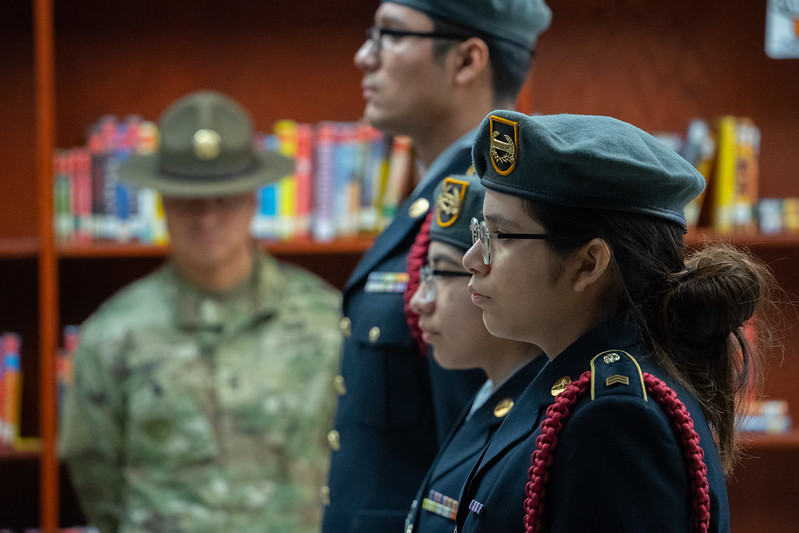
The U.S. Army Junior Reserve Officers’ Training Corps (JROTC) is one of the largest character development and citizenship programs for youth in the world. The National Defense Act of 1916 established organized JROTC programs at public and private educational institutions. In 1964, Congress expanded the program to all military services and changed from active duty to shared support from the services and schools. As congressionally mandated by Title 10 United States Code, Section 2031, each military service must have a JROTC program to “instill in students in United States secondary educational institutions the values of citizenship, service to the United States, and personal responsibility and a sense of accomplishment.” JROTC’s mission, “To Motivate Young People to be Better Citizens”, is the guide post for the program’s success.
The U.S. Army’s JROTC program currently operates in more than 1,700 public and private high schools, military institutions, and correctional centers throughout the United States and overseas. Approximately 40% of JROTC programs are in inner city schools, serving a student population of 50% minorities. As JROTC students (Cadets) progress through the program, they experience opportunities to lead other Cadets. A major component of the JROTC leadership and citizenship program is female Cadets. Female Cadets make up 40% of the Cadet population. The JROTC faculty is led by nearly 4,000 instructors who are retired from active duty, reserve duty, or National Guard Army service. Instructors are trained and qualified in accordance with the National Defense Authorization Act 2007 to teach and mentor approximately 314,000 JROTC Cadets annually.

